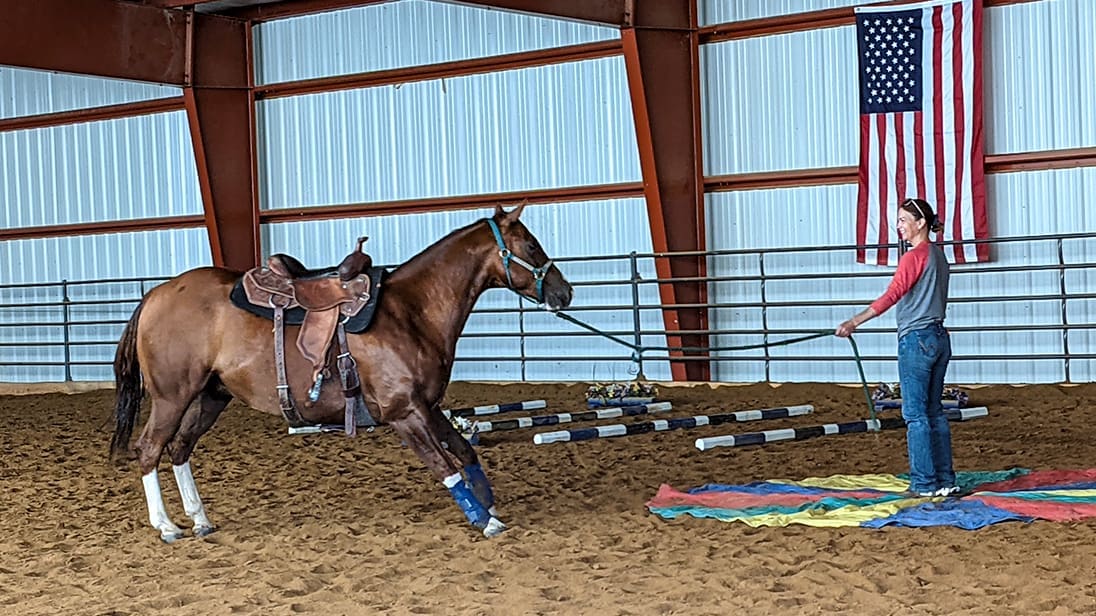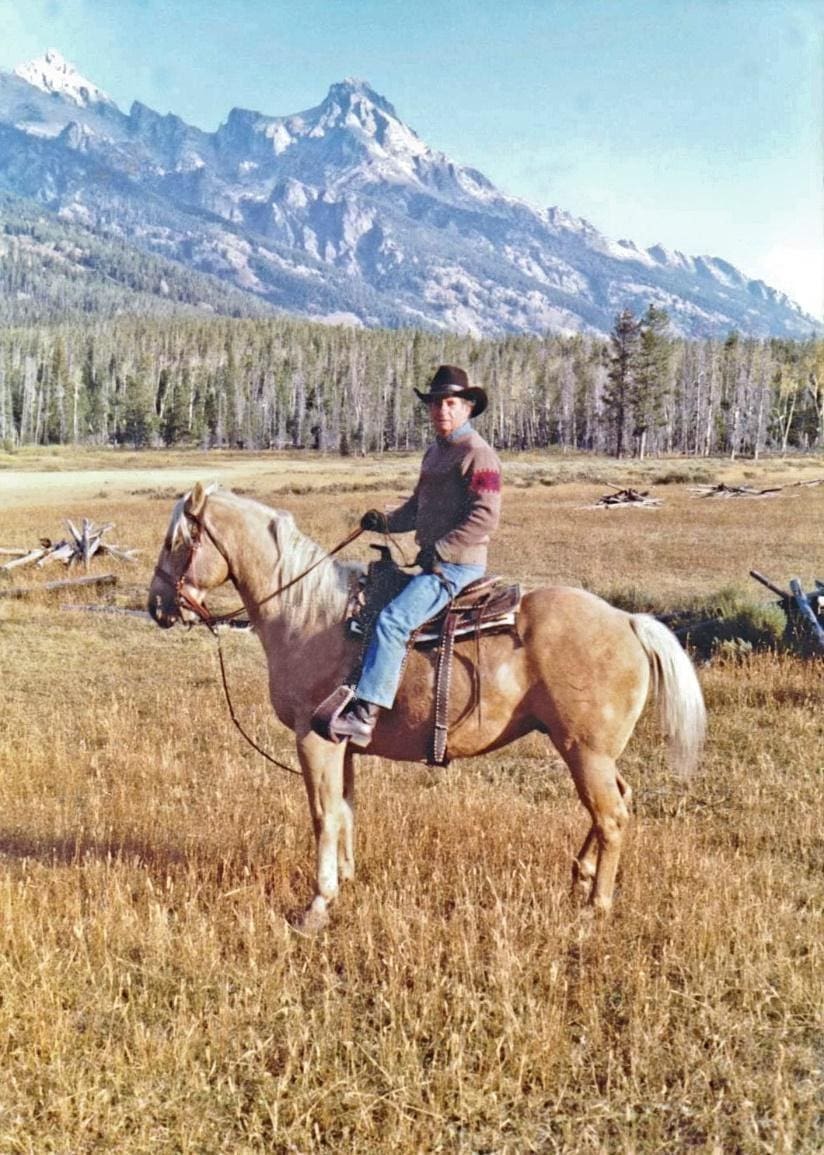Question Category: Issues from the Ground
Question: Hello Julie,
I recently purchased a 13 yr QH mare about six months ago. I had been riding her for about eight months with an additional two-month lease. I decided to purchase her. She is my first horse. She was formally a western barrel horse but we have converted to English riding for several reasons. While I’m learning a lot, taking lessons, and reading piles of material, everyday I experience a new behavior that she has not shown me since I’ve known her. Today she kicked me when I tried to clean off some of the mud in-between her legs close to her teats. I realize that’s probably a sensitive area, especially when there’s mud caked to her skin. What should have been my response to her kicking me? I’m not sure if my reprimands are correct and effective. How can I clean that area without this happening again? Thanks for your help.
Barbara
Answer: Hi Barbara,
Thanks for your great questions and this is an important safety issue. Yes, between the legs and the teat area is VERY sensitive and a horse must be gently desensitized in this area (same thing for the sheath area of a gelding or stallion). If a horse has never been desensitized in these areas, their natural reaction would be to kick.
I do not think you can blame or punish the horse for this, since it was an understandable reaction on her part. My guess is that she probably gave warning before she actually kicked (unless you totally surprised her), so you need to learn to pay attention to your horse’s communication efforts. Watch the ears, level of the head, tail swishing, feet moving, etc. If you reached up and touched her there without warning, it is quite possible she (or any horse not used to this) would lash out without warning.
This is a great example of why people are more prone to injury around an unfamiliar horse, since you do not really know her idiosyncrasies or how she was trained and handled. As time goes by, you will learn more and more about her and know what to expect in terms of behavior. It has been an observation of mine that people with limited experience with horses (who have only worked with a small number of horses) make assumptions that all horses will act the same way as the ones they are used to handling.
If a horse is not accustomed to being touched in certain areas, it is perfectly natural for them to react with alarm. You cannot assume that all horses are used to being touched on all parts of their bodies. I have even seen well-broke horses that have never had their legs or faced brushed, who react with alarm when an unknowing person starts vigorously brushing these areas that have never been desensitized.
To get your horse accustomed to being touched in this very sensitive area, you’ll have to start slowly and work up to it. First let me mention some safety concerns. To work on her belly or teat area, you will be standing in a danger zone where she can easily kick you (as you have already discovered). Make sure you face forward and reach under with your closest hand so that your head is not moving toward the kick zone. If you face back and reach under with either hand, your head comes down closer to the kick zone. Secondly, this is a great example of why it is a good idea to wear a helmet when ground handling horses.
To teach your horse to accept your touch in the teat area, start slowly by rubbing gently and slowly with your hands in an area where she is comfortable, like higher up on her belly or even up on her back. Slowly advance closer to the area where she becomes uncomfortable and watch her closely for signs that she is getting tense (head coming up, ears tensing back, moving away). If she cocks a foot or switches her tail, you have gone too far and she is becoming defensive. When you find how far you can advance, where her discomfort is beginning but not so far that she becomes defensive, just hold your hand there until she relaxes and then retreat (back away and walk away from her). Go back again and again in this manner until she has become desensitized and you have broadened the area that she is comfortable with you touching. Slowly advance the area where you are touching and give her time to accept each new touch.
This advance and retreat technique is HIGHLY effective with horses. Advance only as far as you see the beginnings of discomfort, then hold that position until the horse relaxes somewhat (drops head, relaxes ears, chews or sighs) and then retreat away from the horse, to reward her acceptance of your touch. Don’t feel like you need to get in a hurry to clean her teats. Yes, this is an area that can collect dirt and grime, but some waxy build up there is normal and acts as an insulation to protect the sensitive skin. Be very gentle and don’t over-do the cleaning of the teats. Once your horse has been desensitized to touch in this area, she will accept it without protest.
Be careful working around the hind end of the horse and remember, do not assume any horse is desensitized to touch or handling all over their body. Good luck!
Julie Goodnight, Clinician and Trainer
Copyright ©Julie Goodnight 2000. All Rights Reserved. No part of this website may be reproduced without owner’s express consent.



